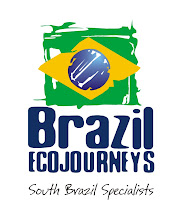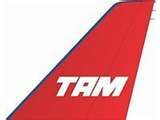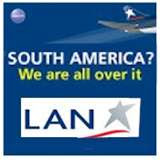
MY NEW HOME
Since announcing to my friends and associates the decision that I will be spending my semi-retirement years in Argentina there is one question that everyone has been asking---“Why Buenos Aires?” Well, I spent a couple of years searching the globe for the place where I would most like to spend at least the next decade of my life. As a travel writer I was easily able to check out Europe---including Eastern Europe and Scandinavia--- Mexico, the Southern United States, some Caribbean Islands, Central America and South America and upon my first visit to Buenos Aires in November 2007,
I knew I had finally discovered the ideal place for my emerging needs.
So there are numerous answers to that one simple question.
Firstly, the warm and friendly residents---known affectionately as portenos---welcome everyone from all over the world and seem to have a very cheerful charisma about them. Native Argentineans now making Buenos Aires their home plus the original Portenos and foreign residents, all enhance the international flair of this city. Secondly, the climate is very enticing with four distinct seasons---not like the eternal California or Florida summer--- but very temperate and even a mild winter. No hurricanes, earthquakes or tornadoes to worry about either. Thirdly, Buenos Aires is known as the Paris of South America and it comes by this reputation honestly as it is truly a cosmopolitan, sophisticated city in the heart of Latin America. Fourthly, the cost of living and real estate is so inexpensive that my small but hard-earned nest egg will stretch further and last longer here than almost anywhere else. And last, but not least, the political climate in Argentina has stabilized since their economic woes of the early new millennium and foreign investment along with a strong local economy is making this country one of the new hot-spots amongst the smart foreign and South American investors and appears to be on a continuing upward trend.
Having identified my reasons it is important to note that there is much more to life in this amazing capital city. Within this metropolis of about thirteen million residents there is a multitude of diverse and historic neighborhoods to evaluate and each with its own unique character. The upscale Recoletta, the trendy new San Telmo or the historic Palermo are just a few to mention. The local Latin flair and customs are divergent in each enclave. But some traditions are universal to the entire city. With dinner time starting at about 10PM this takes a little timing adjustment, but then the nightlife pulses with Tango and much more until at least 4AM and morning rush-hour doesn’t happen until 10AM. For portenos it’s all about living life beyond the workday and enjoying the fruits of your labor. So life in Buenos Aires also means a whole new body clock and Latin rhythm.
I was fortunate on my first trip to the city to meet the owner of ba4UApartments who, along with his English speaking team of consultants, provides a complete turnkey service of short-term apartment rentals, real estate consulting, legal services and interior décor services. This has made the entire transition very convenient even though I am thousands of miles away for most of the purchasing process.
Although I am currently linguistically challenged when it comes to Spanish, with the help of my new found amigos, I am managing to weave my way through the process to set up a new home in what I consider to be a Latin paradise. I am excited by the thought of my new residence not just in Buenos Aires but by the prospect of exploring all of the diverse regions and countryside that South America has to offer from the mountainous glaciers in the south to the arid north and the Pacific and Atlantic coastal vistas. Fodder for numerous fascinating travel stories in my future.
Finding the right apartment and navigating the complex purchasing process required the services of a local real estate agent who spoke English. Although the process is similar to what we are used to in Canada, I needed an expert from ba4Uapartments to guide me through the indigenous nuances and the Spanish language terminology.
Most of the fun about buying a home here is deciding where to live in this pulsating city and which neighborhood suites you best. I spent many hours walking the city neighborhoods---often losing myself in the architectural riches---over the course of two visits for a total duration of about one month. I eventually decided upon the popular Palermo which is a community in transition. It is a blend of old historic homes, cobbled streets, new high rise apartments, interesting boutiques and gourmet restaurants with a vibrant night life. It is adjacent to the largest parkland in the city which leads down to the Rio Plate waterfront, which is like living at the edge of Lake Ontario without the icy cold blasts in winter.
One major decision is to choose between a charming, historic Spanish building or a brand new high-rise. I chose the latter because my primary requirement was a minimum twenty meter swimming pool for my daily exercise to try to keep my tired, old body in shape with a daily work-out that I love. However, a studio apartment in the older classic buildings can be purchased for as little as US$90,000 while my two bedroom, two bathroom---must be ready for all those friends who want to visit--- 900 sq. ft. apartment with all the modern facilities like a gym and café on the 23rd floor with spectacular views, was US$200,000, still a bargain by today’s standards. Whatever your personal choice may be, for sure it can be found at the right price in this city of plenty.
Prior to making an offer on your choice of new home you will need to secure your Argentina tax number and for this you have to acquire a proof of residency certificate from the local police station closest to where you are staying in Buenos Aires. You must visit the police station personally and arrange for them to come and verify your temporary address, usually the next day, and issue the certificate. You have to remain in your residence from 8AM to 4PM on the date given to you by the police officer.
This led me to my first---and I hope my only---encounter with the Buenos Aires police! Even though I had been told that my Policía Bonaerense Officer would arrive at my apartment between the specified hours the next day I assumed it would be like the cable repair man or the furniture delivery truck arriving at the very last minute after I had spent the whole day imprisoned in my small apartment watching daytime soap operas on television---in Spanish, no less---and waiting patiently. Much to my surprise I was in my bathrobe, pre-shower, brewing my first pot of coffee at 10AM when my door bell rang. Fortunately in my caffeine-deprived condition the police officer only wanted to see my passport and efficiently issued my residency certificate with a friendly but insightful smile.
Then I took this certificate---along with my trusty local interpreter---to the tax office where I had to fill out the application form---only available in Spanish---and receive my tax number. This allowed me to actually commence the legal aspects of purchasing my new home in Argentina
Although similar to our home purchase process here in Canada there are some distinctly Argentinian property laws to be followed.
When you have decided on the property you would like to buy, the first step is to make an offer and pay the reserva---usually US$1000---which stops the vendor from showing the place to any other interested parties. The usual counter-offer process continues until both parties have agreed upon the purchase price.
One of the unusual rules to a home purchase in Buenos Aires concerns the real estate agent's commission which is divided between both the seller and the purchaser. Usually each party pays a three percent commission---sometimes four percent---plus a 21% VAT tax on the commission to the federal government. This is a separate financial transaction from the actual purchase and is usually paid when the vendor accepts the purchaser's offer.
To conclude the purchase you will need the services of an Escribano (Notary) who will search the title and the property rights for the past ten years---except in the case of new buildings---to ensure there are no mortgages or ownership rights attached to the apartment. The fees for this service range from 1.5 to 4 percent of the purchase price and you have the right to choose your own Escribano.
The next step is the Boleto---sales contract---which outlines the agreed upon price, financial terms and transfer of ownership date. Finally, upon possession of the real estate the Escritura will transfer and register your ownership with your name on the property title and this requires the services of your notary again. Financing is best arranged through your own local bank in Canada as mortgages for foreigners in Argentina are very hard to arrange and if at all, come with very high interest rates.
Throughout the process you will want to ensure that you are working with bilingual, reliable local representatives with an established history in Buenos Aires real estate.
Then comes the shopping! There’s very little point to bringing many possessions from your Canadian home at huge shipping costs as the prices locally are so reasonable and you will enjoy the fun of starting a fresh in your new home. When you see the price tags you will be pleasantly amazed. Probably not as much as I was stunned by the unbelievably low prices because I was unable to read the Spanish fine print on the price tag which I subsequently learned---after a difficult conversation with the salesperson involving my Spanish-English phrase book---stated ten easy monthly payments.
If you have decided upon one of the older Spanish apartments you might enjoy Sunday shopping for Spanish antiques in the San Telmo market and stores. Or if you’re going with the modern new apartment perhaps with a stone floor then the boutiques and designer furniture stores in Palermo will be more appropriate. Either way you will benefit from how low the furniture and houseware prices are compared to what you are used to spending at home. That is until you go to buy your television, sound system or computer as these items are all imported and come with a traditional North American price tag. But this is the only down-side to your Buenos Aires shopping trips and the rest of the time it’s like being on a shopping trip with prices from decades ago that are only a distant memory for most of us today.
So my best advice to anyone who is in the process of planning their retirement or looking for a second home with great rental income potential, is to visit Buenos Aires now and check-out the Latin American experience today while it is still affordable and accessible to foreigners who are thinking about their future needs. At the very least you will enjoy a unique vacation experience and, like so many others, fall in love with the magic of this Paris of South America. You might discover, as I did, a whole new life ahead of you and a retirement filled with fun and unique possibilities.
I knew I had finally discovered the ideal place for my emerging needs.
So there are numerous answers to that one simple question.
Firstly, the warm and friendly residents---known affectionately as portenos---welcome everyone from all over the world and seem to have a very cheerful charisma about them. Native Argentineans now making Buenos Aires their home plus the original Portenos and foreign residents, all enhance the international flair of this city. Secondly, the climate is very enticing with four distinct seasons---not like the eternal California or Florida summer--- but very temperate and even a mild winter. No hurricanes, earthquakes or tornadoes to worry about either. Thirdly, Buenos Aires is known as the Paris of South America and it comes by this reputation honestly as it is truly a cosmopolitan, sophisticated city in the heart of Latin America. Fourthly, the cost of living and real estate is so inexpensive that my small but hard-earned nest egg will stretch further and last longer here than almost anywhere else. And last, but not least, the political climate in Argentina has stabilized since their economic woes of the early new millennium and foreign investment along with a strong local economy is making this country one of the new hot-spots amongst the smart foreign and South American investors and appears to be on a continuing upward trend.
Having identified my reasons it is important to note that there is much more to life in this amazing capital city. Within this metropolis of about thirteen million residents there is a multitude of diverse and historic neighborhoods to evaluate and each with its own unique character. The upscale Recoletta, the trendy new San Telmo or the historic Palermo are just a few to mention. The local Latin flair and customs are divergent in each enclave. But some traditions are universal to the entire city. With dinner time starting at about 10PM this takes a little timing adjustment, but then the nightlife pulses with Tango and much more until at least 4AM and morning rush-hour doesn’t happen until 10AM. For portenos it’s all about living life beyond the workday and enjoying the fruits of your labor. So life in Buenos Aires also means a whole new body clock and Latin rhythm.
I was fortunate on my first trip to the city to meet the owner of ba4UApartments who, along with his English speaking team of consultants, provides a complete turnkey service of short-term apartment rentals, real estate consulting, legal services and interior décor services. This has made the entire transition very convenient even though I am thousands of miles away for most of the purchasing process.
Although I am currently linguistically challenged when it comes to Spanish, with the help of my new found amigos, I am managing to weave my way through the process to set up a new home in what I consider to be a Latin paradise. I am excited by the thought of my new residence not just in Buenos Aires but by the prospect of exploring all of the diverse regions and countryside that South America has to offer from the mountainous glaciers in the south to the arid north and the Pacific and Atlantic coastal vistas. Fodder for numerous fascinating travel stories in my future.
Finding the right apartment and navigating the complex purchasing process required the services of a local real estate agent who spoke English. Although the process is similar to what we are used to in Canada, I needed an expert from ba4Uapartments to guide me through the indigenous nuances and the Spanish language terminology.
Most of the fun about buying a home here is deciding where to live in this pulsating city and which neighborhood suites you best. I spent many hours walking the city neighborhoods---often losing myself in the architectural riches---over the course of two visits for a total duration of about one month. I eventually decided upon the popular Palermo which is a community in transition. It is a blend of old historic homes, cobbled streets, new high rise apartments, interesting boutiques and gourmet restaurants with a vibrant night life. It is adjacent to the largest parkland in the city which leads down to the Rio Plate waterfront, which is like living at the edge of Lake Ontario without the icy cold blasts in winter.
One major decision is to choose between a charming, historic Spanish building or a brand new high-rise. I chose the latter because my primary requirement was a minimum twenty meter swimming pool for my daily exercise to try to keep my tired, old body in shape with a daily work-out that I love. However, a studio apartment in the older classic buildings can be purchased for as little as US$90,000 while my two bedroom, two bathroom---must be ready for all those friends who want to visit--- 900 sq. ft. apartment with all the modern facilities like a gym and café on the 23rd floor with spectacular views, was US$200,000, still a bargain by today’s standards. Whatever your personal choice may be, for sure it can be found at the right price in this city of plenty.
Prior to making an offer on your choice of new home you will need to secure your Argentina tax number and for this you have to acquire a proof of residency certificate from the local police station closest to where you are staying in Buenos Aires. You must visit the police station personally and arrange for them to come and verify your temporary address, usually the next day, and issue the certificate. You have to remain in your residence from 8AM to 4PM on the date given to you by the police officer.
This led me to my first---and I hope my only---encounter with the Buenos Aires police! Even though I had been told that my Policía Bonaerense Officer would arrive at my apartment between the specified hours the next day I assumed it would be like the cable repair man or the furniture delivery truck arriving at the very last minute after I had spent the whole day imprisoned in my small apartment watching daytime soap operas on television---in Spanish, no less---and waiting patiently. Much to my surprise I was in my bathrobe, pre-shower, brewing my first pot of coffee at 10AM when my door bell rang. Fortunately in my caffeine-deprived condition the police officer only wanted to see my passport and efficiently issued my residency certificate with a friendly but insightful smile.
Then I took this certificate---along with my trusty local interpreter---to the tax office where I had to fill out the application form---only available in Spanish---and receive my tax number. This allowed me to actually commence the legal aspects of purchasing my new home in Argentina
Although similar to our home purchase process here in Canada there are some distinctly Argentinian property laws to be followed.
When you have decided on the property you would like to buy, the first step is to make an offer and pay the reserva---usually US$1000---which stops the vendor from showing the place to any other interested parties. The usual counter-offer process continues until both parties have agreed upon the purchase price.
One of the unusual rules to a home purchase in Buenos Aires concerns the real estate agent's commission which is divided between both the seller and the purchaser. Usually each party pays a three percent commission---sometimes four percent---plus a 21% VAT tax on the commission to the federal government. This is a separate financial transaction from the actual purchase and is usually paid when the vendor accepts the purchaser's offer.
To conclude the purchase you will need the services of an Escribano (Notary) who will search the title and the property rights for the past ten years---except in the case of new buildings---to ensure there are no mortgages or ownership rights attached to the apartment. The fees for this service range from 1.5 to 4 percent of the purchase price and you have the right to choose your own Escribano.
The next step is the Boleto---sales contract---which outlines the agreed upon price, financial terms and transfer of ownership date. Finally, upon possession of the real estate the Escritura will transfer and register your ownership with your name on the property title and this requires the services of your notary again. Financing is best arranged through your own local bank in Canada as mortgages for foreigners in Argentina are very hard to arrange and if at all, come with very high interest rates.
Throughout the process you will want to ensure that you are working with bilingual, reliable local representatives with an established history in Buenos Aires real estate.
Then comes the shopping! There’s very little point to bringing many possessions from your Canadian home at huge shipping costs as the prices locally are so reasonable and you will enjoy the fun of starting a fresh in your new home. When you see the price tags you will be pleasantly amazed. Probably not as much as I was stunned by the unbelievably low prices because I was unable to read the Spanish fine print on the price tag which I subsequently learned---after a difficult conversation with the salesperson involving my Spanish-English phrase book---stated ten easy monthly payments.
If you have decided upon one of the older Spanish apartments you might enjoy Sunday shopping for Spanish antiques in the San Telmo market and stores. Or if you’re going with the modern new apartment perhaps with a stone floor then the boutiques and designer furniture stores in Palermo will be more appropriate. Either way you will benefit from how low the furniture and houseware prices are compared to what you are used to spending at home. That is until you go to buy your television, sound system or computer as these items are all imported and come with a traditional North American price tag. But this is the only down-side to your Buenos Aires shopping trips and the rest of the time it’s like being on a shopping trip with prices from decades ago that are only a distant memory for most of us today.
So my best advice to anyone who is in the process of planning their retirement or looking for a second home with great rental income potential, is to visit Buenos Aires now and check-out the Latin American experience today while it is still affordable and accessible to foreigners who are thinking about their future needs. At the very least you will enjoy a unique vacation experience and, like so many others, fall in love with the magic of this Paris of South America. You might discover, as I did, a whole new life ahead of you and a retirement filled with fun and unique possibilities.
















